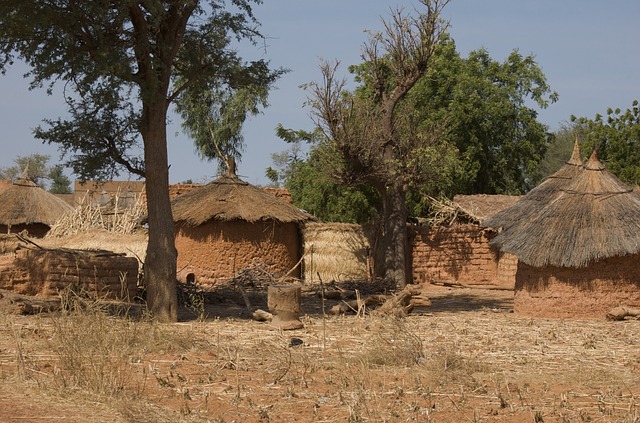Burkina Faso / 𞤄𞤵𞤪𞤳𞤭𞤲𞤢 𞤊𞤢𞤧𞤮 – Let’s explore here

What’s it like in Burkina Faso?
Burkina Faso is a mostly very flat, landlocked country in west Africa, although in the south west there are sandstone cliffs. Its highest point is Mount Tenakourou, in the west of the country, at 2,451 ft (747 m) above sea level. It’s a bit larger than the UK.
It has a long, rich and very troubled history, involving much political instability, resulting in it being one of the least developed and poorest countries on the planet. It shares land borders with Mali, Niger, Benin, Togo, Ghana and Cote d’Ivoire.
Its population is around 22½ million people (2023), around three million of whom live in the capital, Ouagadougou. Ouagadougou (Ouaga for short), has one of West Africa’s largest markets.

A bit about the history of Burkina Faso
Early History and Indigenous Peoples
Burkina Faso has a long history of diverse ethnic groups and complex societies. The region was initially inhabited by various indigenous groups, including the Mossi, Gur and Lobi peoples. The Mossi, who arrived in the region around the 11th century, established powerful kingdoms such as Tenkodogo and Ouagadougou, which played a significant role in regional trade and political dynamics.
Colonial Era and French Rule
In the late 19th century, European powers began to expand their control over west Africa. The region that is now Burkina Faso was colonised by the French, becoming part of French West Africa in 1896. The area was known as the Upper Volta, named after the Volta River that flows through it. The French introduced a system of indirect rule, with local chiefs acting as intermediaries, though the people of the region experienced significant economic exploitation.
Path to Independence
In the early 20th century, nationalist movements began to emerge across French West Africa. After World War II, calls for self determination grew stronger, and the people of Upper Volta began to push for independence. On 5 August 1960, Upper Volta gained independence from France, with Maurice Yaméogo becoming the first president of the newly formed country.
Political Instability and Revolution
After independence, Burkina Faso experienced periods of political instability, marked by military coups and changing leadership. In 1983, a revolution led by Captain Thomas Sankara transformed the country. Sankara initiated a series of ambitious reforms aimed at reducing poverty, improving healthcare and empowering women. However, his radical policies and confrontations with the political elite led to his assassination in 1987.
The Blaise Compaoré Era
Following Sankara’s death, Blaise Compaoré took power in a coup and ruled the country for 27 years. During his tenure, Burkina Faso experienced relative stability, but his regime was marred by allegations of corruption and human rights abuses. Compaoré was a key figure in regional politics, but his autocratic rule eventually led to widespread dissatisfaction.
The 2014 Uprising and Transition
In 2014, after plans to extend Compaoré’s presidency, widespread protests erupted across the country. The public outcry led to Compaoré’s resignation and the establishment of a transitional government. Burkina Faso entered a period of political transition, with the goal of establishing democratic elections. In 2015, a military coup briefly disrupted the process, but by 2016, democratic elections were held, leading to the election of Roch Marc Christian Kaboré as president.
Modern Burkina Faso
Since the transition, Burkina Faso has faced numerous challenges, including terrorist attacks from extremist groups operating in the Sahel region. Despite these security threats, the country has made progress in rebuilding its political institutions and fostering economic growth. However, the ongoing security situation remains a significant concern, with continued efforts to combat insurgencies and promote stability.

Current travels
Our current planned route takes us close to Burkina Faso, and we may make a detour to visit the country. Although due to the current turbulence in the region, we may visit at another time. Whenever we do visit, hopefully our journey will improve our knowledge of this intriguing and beautiful country, and enable us to meet some interesting people. We’ll be updating this page at that time – don’t forget to check back 🙂
Map of Burkina Faso

What’s it like to drive in Burkina Faso?
They drive on the right hand side of the road in Burkina Faso. In the main, roads are very poor, with many being unsurfaced dirt tracks. Driving standards are also poor.
Do you require an international driving permit in Burkina Faso?
We’ve created a dedicated page to driving abroad, which answers this question, and more, which you might find helpful.
Can you use your UK driving license when driving through Burkina Faso?
We’ve created a dedicated page to driving abroad, which answers this question, and more, which you might find helpful.
Do I need a carnet de passages to drive in Burkina Faso?
We’ve created a dedicated page to driving abroad, which answers this question, and more, which you might find helpful.
What is the weather like in Burkina Faso?
The rainy season in Burkina Faso is from April to October. The dry season is from November to March. The best time to visit is between December and January. The worst months are July to September.
What currency do they use in Burkina Faso?
In Burkina Faso they use the West African CFA franc. Cash is widely used. The use of credit / debit cards is not widely accepted outside of tourist areas. Travellers cheques are not readily accepted. There are very few ATMs in cities and towns throughout the country.
The West African CFA franc is used in Benin, Burkina Faso, Guinea-Bissau, Côte d’Ivoire, Mali, Niger, Senegal and Togo.
You should make yourself aware of the amount that your bank charges you for using credit and debit cards abroad. Often credit cards are cheaper for purchasing items directly, and for withdrawing cash from ATMs.
What language do they speak in Burkina Faso?
They speak French in Botswana, although Mossi is also widely spoken.
What time zone is Burkina Faso in?
Remember, when you’re planning your next trip to take a look at what time zone it’s in.
Do I need a visa to visit Burkina Faso?
We’ve created a dedicated, more comprehensive page on visas, which you should find helpful. Check it out!
Is wild camping legal in Burkina Faso?
Yes, wild camping is fine in Burkina Faso.
What plug / socket type do they use in Burkina Faso?
In Burkina Faso they use plug / socket types C and E.


Health issues in Burkina Faso
Is it safe to drink water in Burkina Faso?
No, it is not safe to drink tap water in Burkina Faso. Bottled water is readily available throughout the country.
What vaccinations are required for Burkina Faso?
This NHS website is kept up to date with all relevant information on vaccinations in Burkina Faso.
Phones in Burkina Faso
What is the country calling code for Burkina Faso?
The country calling code for Burkina Faso is +226
What are the emergency phone numbers in Burkina Faso?
- The emergency number for police in Burkina Faso is: 17
- In Burkina Faso, the emergency number for ambulance is: 112
- The emergency number for fire in Burkina Faso is: 18
If you’ve got some useful info that you’d like to share, let us know!
And don’t forget to check out all the other pictures!
